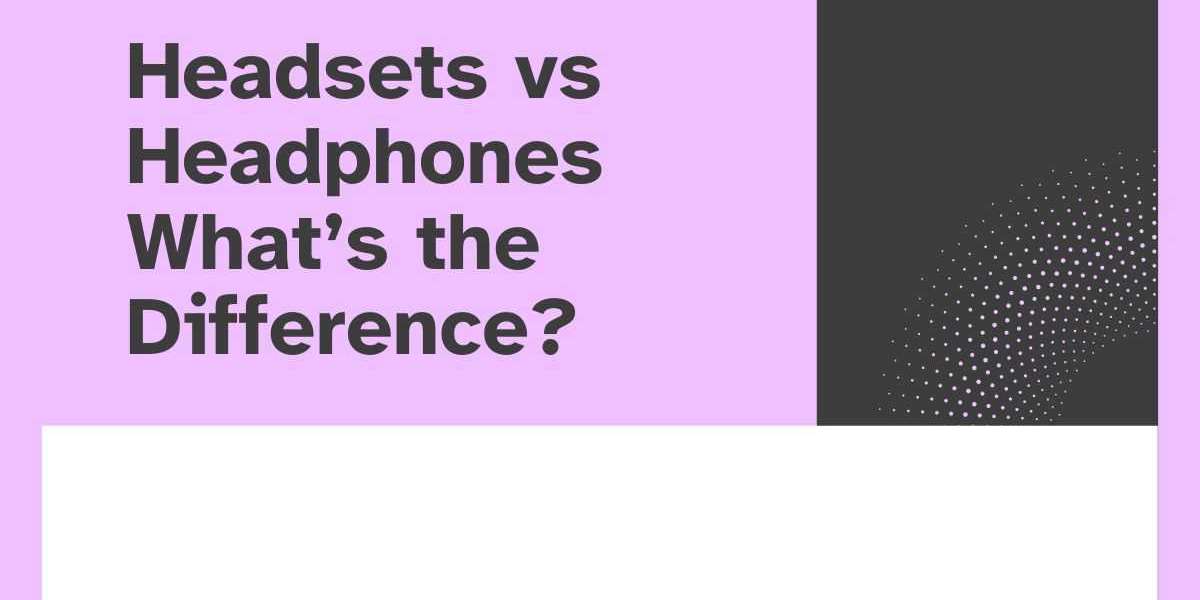Introduction
Distinguishing between headsets and headphones is essential for individuals seeking the ideal audio solution that aligns with their specific needs and preferences. Headphones, in their most basic form, are audio devices worn over the ears to deliver high-quality sound for music, entertainment, or immersive audio experiences. They traditionally lack a built-in microphone and are primarily designed for audio output. In contrast, headsets combine headphones with a microphone, providing a comprehensive audio solution for both listening and communication purposes. Headsets are particularly popular in professional settings, such as offices or call centers, where individuals require clear and hands-free communication during calls or virtual meetings. This dual functionality makes headsets versatile for tasks ranging from casual music listening to attending virtual meetings or participating in gaming sessions. While headphones excel in delivering superior audio quality for immersive music or entertainment experiences, headsets offer a more integrated solution for individuals who require both audio input and output functionalities. The choice between headsets and headphones ultimately depends on the user's specific requirements, whether focused on solo audio enjoyment or demanding a versatile audio tool that covers communication needs as well.
Striking the Right Chord: Unveiling the Distinctions Between Headsets and Headphones
In the realm of audio technology, the terms "headsets" and "headphones" are often used interchangeably, but beneath the surface lies a nuanced distinction that caters to diverse user needs and preferences. This essay embarks on an exploration of the fundamental differences between headsets and headphones, unraveling the unique characteristics and applications that set them apart.
I. The Basics: What Defines Headsets and Headphones?
A. Headsets
The sleek and modern aesthetics of Jabra headsets add a touch of style to any workplace.
1. Comprehensive Audio Solutions:
Headsets are audio devices that combine headphones with a built-in microphone, providing users with a comprehensive tool for both audio output and input.
2. Communication-Focused:
Primarily designed for communication purposes, headsets find their niche in scenarios where users need hands-free and clear communication, such as in offices, call centers, and during online gaming.
B. Headphones
With sleek and modern designs, Yealink phones add a touch of sophistication to any workplace.
1. Singular Audio Output:
Headphones, on the other hand, are dedicated to delivering audio output only. They lack an integrated microphone, focusing solely on providing an immersive listening experience.
2. Music, Entertainment, and More:
Headphones are versatile audio devices widely used for enjoying music, watching movies, or immersing oneself in virtual realities without the need for communication features.
II. Design and Form Factors:
A. Headsets:
1. Earpieces with Microphone:
Headsets typically feature earpieces equipped with a microphone, facilitating two-way communication.
2. Variations in Design:
Headsets come in various designs, including over-ear, on-ear, and in-ear options, catering to individual comfort preferences.
B. Headphones:
1. Focus on Audio Output:
Headphones prioritize audio output quality and comfort for prolonged wear, often with cushioned ear cups or pads.
2. Diverse Styles:
Headphones offer a wide array of styles, such as circumaural (over-ear), supra-aural (on-ear), and in-ear monitors (IEMs), allowing users to choose based on their preferences and use cases.
III. Communication Capabilities:
A. Headsets:
1. Hands-Free Communication:
The integration of a microphone in headsets allows for hands-free communication, making them ideal for virtual meetings, calls, and online gaming.
2. Unified Communication:
Headsets often come equipped with features to enhance communication in unified communication platforms, making them essential tools in professional and gaming settings.
B. Headphones:
1. Audio-Centric:
Headphones excel in delivering high-quality audio output for an immersive and enjoyable listening experience.
2. Lack of Microphone:
Since headphones lack an integrated microphone, they are not designed for two-way communication, making them more suitable for solitary audio indulgence.
IV. Versatility in Usage:
A. Headsets:
1. Professional Settings:
Headsets shine in professional environments where clear communication is paramount, such as in call centers, customer service roles, and during virtual meetings.
2. Gaming and Entertainment:
With the rise of online gaming and virtual collaboration, headsets have become indispensable for gamers, streamers, and content creators.
B. Headphones:
1. Music and Entertainment:
Headphones are synonymous with personal entertainment, providing an immersive audio experience for music enthusiasts, cinephiles, and individuals seeking audio solitude.
2. Studio Monitoring:
High-end headphones are favored in studio environments for critical audio monitoring and mixing due to their accurate sound reproduction.
V. Portability and On-the-Go Use:
A. Headsets:
1. Varied Portability:
The portability of headsets can vary depending on the design. Wireless headsets with Bluetooth capabilities offer enhanced mobility for users on the go.
2. Compact Designs:
Some headsets are designed with foldable or collapsible features, making them more travel-friendly.
B. Headphones:
1. Diverse Portability:
Headphones come in a spectrum of portability, ranging from compact and foldable designs for on-the-go use to larger, studio-style headphones designed for stationary listening.
2. Wireless Options:
Bluetooth-enabled headphones provide users with the convenience of wireless connectivity, enabling untethered movement.
VI. Comfort Considerations:
A. Headsets:
1. Balanced Design:
Comfort in headsets is often achieved through a balanced design that accommodates both the headphones and the microphone.
2. Adjustable Headbands and Cushioned Ear Cups:
Ergonomic features like adjustable headbands and cushioned ear cups contribute to prolonged comfort during extended usage.
B. Headphones:
1. Emphasis on Audio Comfort:
Headphones prioritize audio comfort, ensuring a snug fit without the added weight or bulk of an integrated microphone.
2. Customizable Fits:
Over-ear headphones often feature adjustable headbands and cushioned ear cups to tailor the fit to individual preferences.
VII. Budget Considerations:
A. Headsets:
1. Value for Communication:
Headsets are often priced based on their communication features, microphone quality, and additional functionalities.
2. Varied Price Range:
The market offers headsets across a broad price spectrum, from budget-friendly options to high-end models with advanced features.
B. Headphones:
1. Audio Quality Investment:
Headphones are priced based on audio quality, brand reputation, and additional features such as noise cancellation.
2. Premium Audio Options:
High-end headphones cater to audiophiles and professionals seeking unparalleled sound quality, and their prices often reflect the premium audio experience.
VIII. Brand and Model Diversity:
A. Headsets:
1. Specialized Brands:
Certain brands specialize in producing high-quality headsets tailored for specific use cases, such as gaming headsets from gaming peripheral manufacturers.
2. Integration with Communication Platforms:
Some headsets are designed in collaboration with communication platform providers, ensuring seamless integration.
B. Headphones:
1. Audio Brand Dominance:
Established audio brands are often synonymous with producing top-tier headphones, known for their commitment to audio excellence.
2. Niche Offerings:
Some headphone brands focus on niche markets, catering to audiophiles, studio professionals, or those seeking unique design aesthetics.
Conclusion:
In the grand symphony of audio technology, headsets and headphones each play distinct roles, harmonizing with the diverse needs and preferences of users. Headsets, with their communication-centric design, thrive in professional and gaming environments, offering a hands-free and immersive experience. Headphones, on the other hand, take center stage in the world of personal entertainment, delivering high-fidelity audio for music enthusiasts and audio professionals alike. Understanding the differences between these two audio companions allows users to make informed choices, ensuring that they find the perfect harmony in their audio experience, whether it be in the hustle of the virtual office or the tranquility of a personal audio escape.








